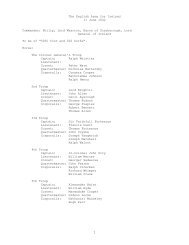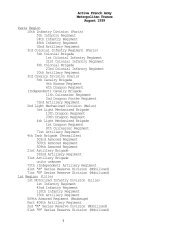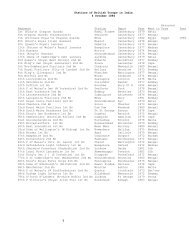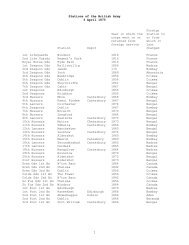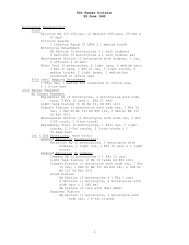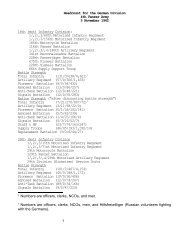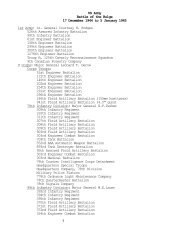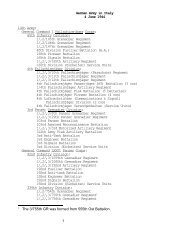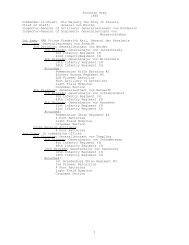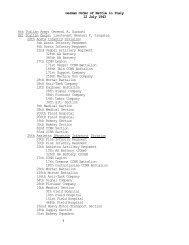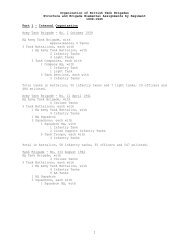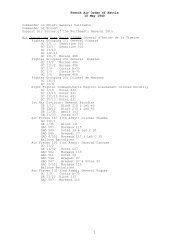Company Officer's Handbook Of The German Army - Command and ...
Company Officer's Handbook Of The German Army - Command and ...
Company Officer's Handbook Of The German Army - Command and ...
You also want an ePaper? Increase the reach of your titles
YUMPU automatically turns print PDFs into web optimized ePapers that Google loves.
52 COMPANY OFFICER'S HANDBOOK<br />
21 cm Nebelwerfer 42, <strong>and</strong> the 28/32 cm Nebelwerfer 41 are all<br />
mounted on pneumatic-tired carriages resembling those used by<br />
artillery weapons. <strong>The</strong>y are generally towed by light half-tracks.<br />
Late <strong>German</strong> rocket weapons include the <strong>Of</strong>enrohr ("Stovepipe"), a<br />
<strong>German</strong> version of the U.S. "Bazooka," designated as the 8.8 cm<br />
Raketen-Panzerbiichse 43 (8.8 cm R.Pz.B. 43).<br />
Rockets create considerable disturbance at the firing point, raising<br />
clouds of dust <strong>and</strong> smoke. <strong>The</strong>ir trails betray the location of the<br />
projector positions. Since crews must take shelter in slit trenches<br />
during firing, the normal rate of fire of the 15 cm Nebelwerfer 41 is<br />
reduced to one salvo in 8 minutes. <strong>The</strong> 15 cm Panzerwerfer 42,<br />
however, because its crew can take quick cover within the vehicle,<br />
is believed to have a higher rate of fire than the other types of<br />
projectors. All types of <strong>German</strong> launchers have a high proportion<br />
of misfires.<br />
24. ARTILLERY<br />
a.- General<br />
<strong>The</strong> st<strong>and</strong>ard artillery materiel 6f the <strong>German</strong> <strong>Army</strong> was developed<br />
in 1933 or subsequently. In addition to this, some older<br />
<strong>German</strong> materiel <strong>and</strong> a considerable quantity of captured materiel,<br />
especially Polish, French, Czech, <strong>and</strong> Russian, are in use.<br />
<strong>The</strong> basic types of <strong>German</strong> field artillery, which were developed<br />
from 1933 to 1939, have continued in use without sweeping changes.<br />
<strong>The</strong>se weapons usually have horizontal sliding-wedge breechblocks,<br />
fire semifixed ammunition (up to <strong>and</strong> including 280-mm), <strong>and</strong> have<br />
split trails which permit a field of fire of about 60 degrees. Designs<br />
are st<strong>and</strong>ardized for maximum interchangeability of parts <strong>and</strong><br />
equipment. <strong>The</strong> same carriage is usually used for a gun of one caliber<br />
<strong>and</strong> the howitzer of the next higher caliber. For example, both<br />
the 105-mm gun (10 cm K. 18) <strong>and</strong> the 150-mm howitzer (15<br />
cmr le.F.H. 18) use the same carriage. Light <strong>and</strong> medium artillery<br />
are designed to be either horse-drawn or motorized. Medium<br />
artillery may be divided into two loads when horse-drawn. Heavy<br />
artillery, always motorized, is usually drawn in two loads.<br />
<strong>The</strong> chief aim of the <strong>German</strong>s in developing new weapons has



